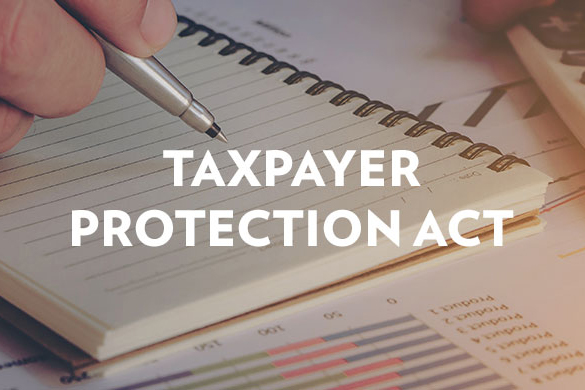The Taxpayer Protection Act: An Updated Legislator's Guide
Pennsylvanians pay $4,589 per person in state and local taxes, which equals 10.2 percent of residents’ total income. This trend must be reversed by restraining spending growth through long-term reforms like the Taxpayer Protection Act (TPA).
Tracking State Budget Trends
The 2016-17 General Fund budget added to Pennsylvania’s fiscal challenges. Lawmakers approved the $31.6 billion budget without implementing meaningful reforms or authorizing enough revenue to balance the budget. Despite lacking solid revenue sources, the legislature increased spending by $1.6 billion—a sum vastly exceeding the combined growth rate of inflation and population.
Read More >Poll: Large Majorities Back Transparency & Accountability Reforms
Critical transparency and accountability measures pending in the state Legislature gained overwhelming public support in a poll released today by the Commonwealth Foundation.
Read More >State Senate Committee Advances Taxpayer Protection Act
Today, the Senate Finance Committee passed Taxpayer Protection Act legislation to the floor, kicking off a push to protect middle-class Pennsylvanians’ finances from unaffordable spending and tax increases like those recently proposed by Gov. Wolf.
Read More >Safeguard Family Finances with the Taxpayer Protection Act
February 23, 2015, HARRISBURG, Pa.—Gasoline taxes, severance taxes, personal income taxes, property taxes, cigarette taxes—no matter the decade, governor, or party in power, a proposal to raise a new tax to cover government spending is always just around the corner. As a result, since 1970, state government spending has risen nearly $14,000 per family of four, leaving residents facing the tenth-highest tax burden in the country to pay for it all.
Read More >Long Term Problems are Big Opportunities for Change
Pennsylvania added nearly two dozen new lawmakers in November, and there’s a new face in the Governor’s Mansion. Indeed, that face will look very new, as Tom Wolf is the first Pennsylvania governor with a beard in more than a century. Unfortunately, the big problems facing taxpayers haven’t changed in years.
Read More >Pennsylvania State Budget Toolkit
The enacted $29 billion General Fund budget (a 1.88 percent increase over 2013-2014) and $71.4 billion total operating budget represent Pennsylvania’s highest spending levels ever—exceeding years when federal stimulus dollars were used to balance the budget.
Read More >Five Steps Toward a Balanced Budget
The consequences of overspending have plagued Pennsylvania for years. This year is no different. Lawmakers are tasked with eliminating a projected budget deficit of nearly $1.7 billion, according to forecasts from the Independent Fiscal Office (IFO). Without reform, this structural deficit could exceed $2.5 billion by 2020.
Read More >Immunizing Taxpayers from Chronic Overspending
Last week, two major bond rating agencies (Fitch and Standards & Poor’s) downgraded Pennsylvania’s debt rating citing poor fiscal health. While this should worry voters—taxpayers will be forced to pay more for state borrowing—it isn’t too late to take our medicine and recover.
Read More >Taxpayer Protection Act Shields Working Families
September 16, 2014, HARRISBURG, Pa.—Today, the Senate Finance Committee passed Senate Bill 7, commonly known as the Taxpayer Protection Act (TPA), out of committee, signaling that protecting taxpayers’ pocketbooks is high on lawmakers’ priority lists in the Fall session.
Read More >The Taxpayer Protection Act
Due to 40 years of government overspending, state and local taxes now cost Pennsylvanians $4,374 per person, equaling 10.3% of resident’s total income. Pennsylvania currently has the 10th highest state and local tax burden in the nation, up from 25th in 1991.
Read More >









